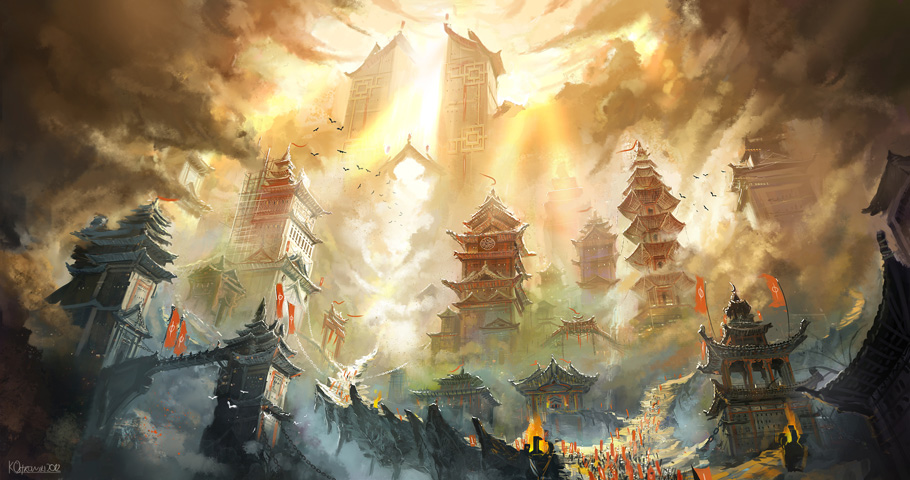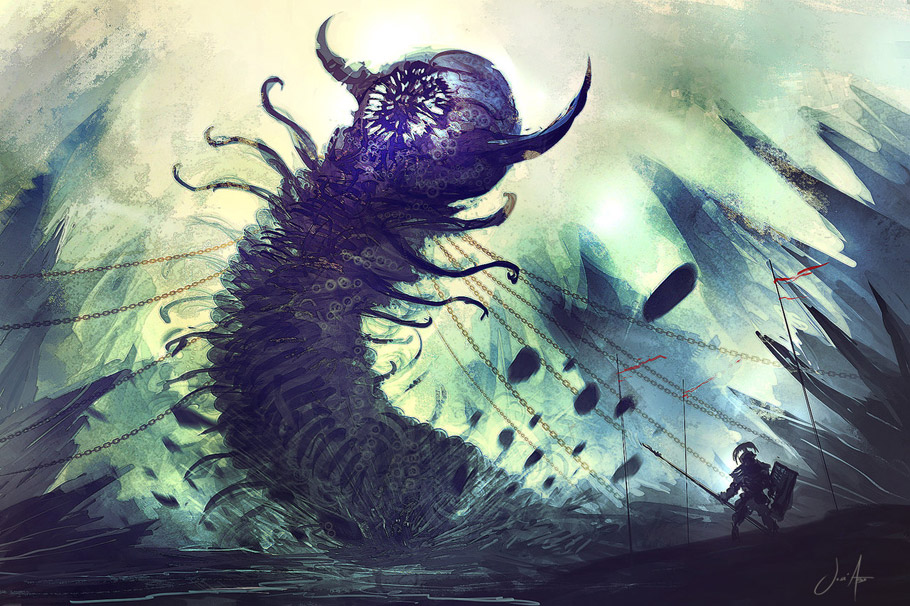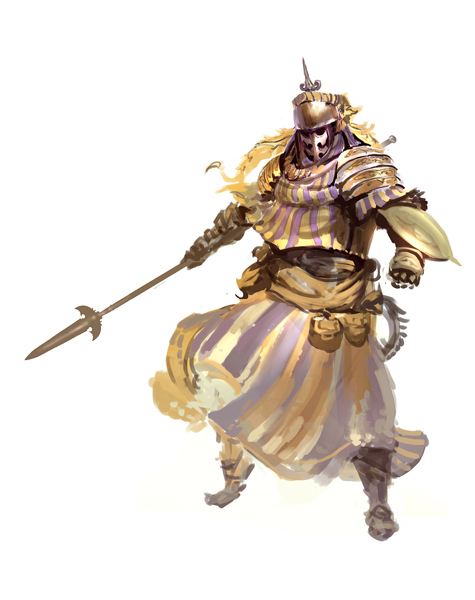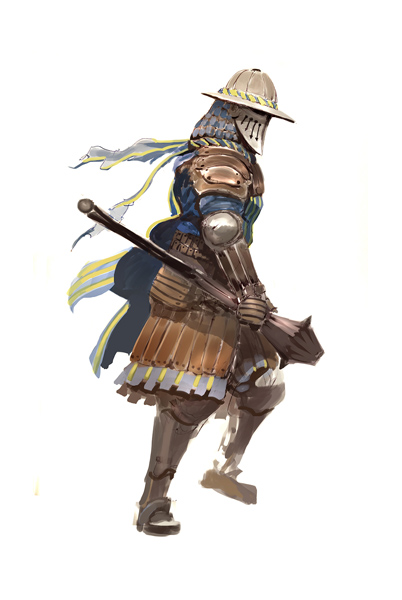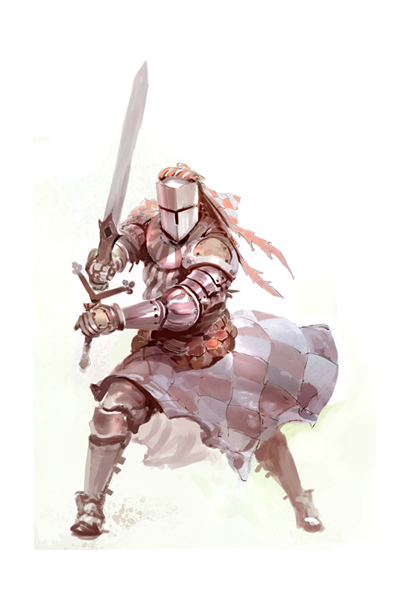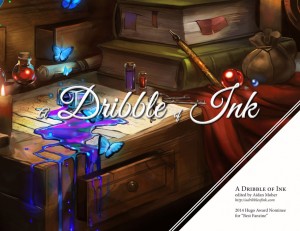You can hear a distant thunder of hoofbeats, steadily growing louder as it approaches. It is a stratum of fantasy that looks beyond the boundary.
You can hear a distant thunder of hoofbeats, steadily growing louder as it approaches. It is a stratum of secondary world fantasy that looks beyond the boundary, the Great Wall of Europe. Secondary world fantasy that is inspired by Byzantium and the Silk Road, all the way to the western borders of China. Characters, landscapes, cultural forms derived from the Abbasid Caliphate, the Taklamakan Desert, and the Empires of Southeast Asia much more than Lancashire.
Thanks to the rising popularity of fantasy fiction, riding, in part, on the wave of Game of Thrones‘ massive success, many of science fiction and fantasy’s old paradigms and forms of have gotten a new look by virtue of new and diverse styles and varieties of stories, new and formerly inhibited voices (primarily women, genderqueer, and minorities), and new or formerly under-utilized wellsprings of inspiration. Elizabeth Bear, one of the many authors at the center of this paradigm shift, calls this “Rainbow SF.” As Science fiction readies its generation ship to move beyond the white-heteronormative-males-conquer-the-galaxy pastiche, popular fantasy is beginning to look beyond the faux-medieval western European that remained so popular throughout the genre’s formative decades. And this doesn’t even include the rise of World SF, as fiction from markets and voices beyond North America and England begin to be heard in the field.
I call such books “Silk Road Fantasy.” Read More »
Tomorrow marks the release of A Plunder of Souls, the third instalment in my historical urban fantasy, the Thieftaker Chronicles. For those who are unfamiliar with the series, the books are set in pre-Revolutionary Boston, and feature a conjuring thieftaker (sort of an eighteenth century private investigator) named Ethan Kaille.
I have a Ph.D. in U.S. History and so I take my historical research seriously; I’ve done my best to portray accurately the real-life events from the 1760s that coincide with my fictional narratives. I have taken care in my portrayal of historical figures, and I have made every effort to create a Boston that is true to its purported time while also being accessible to twenty-first century readers. Read More »
I get the question “Why insects?” quite a lot. My stock response depends on how flippant I’m feeling at the time, but comes in two flavours. One is all about lofty literary ideals and exploring the human condition via the chitinous mirror that is insects. The other is “I just like insects.” Both are true1.
The lofty literary business is a thing, though. There is a genuine tradition, mostly a Central/Eastern European one, of using insects to examine human nature. Kafka’s Metamorphosis, of course, but also the Insect Play by the brothers Capek, and Viktor Pelevin’s Life of Insects. Even the ant section in T.H. White’s Sword in the Stone is worth a mention2.
These are all great works, but for me – the lover of insects – they share a problem. Their portrayals are all very negative. When Samsa wakes up as a cockroach3, it is both to the revulsion of his family and peers, and to considerable physical difficulty just getting around in a human world4, and the various insects in Pelevin and Capek are shown as human, but the worst of what humanity has to offer – selfish, rigid, murderous, warlike. They are an object lesson in where we’ve gone wrong as a species. Read More »
Last year was ink drawings of samurais, and this year it’s knights.
From the moment Seattle-based artist Kekai Kotaki posted the first of his thousand and one knights, I knew it’d become a weekly delight to see his new creations. Last Year, Kotaki did a small set of sketches featuring samurai designs, which featured stylish heavy inks, accented by bold colours, and showcased his ability to apply creative license to an iconic warrior. I loved the project so much, that I reached out to Kotaki to have a chat about his knights.
“I tend to try pick a theme each year and try to run with it as long as possible,” Kotaki explained when I asked him about the project’s origins. “Last year was ink drawings of samurais, and this year it’s knights.”
I even joke about making a book called The One Thousand and One Knights, but I had to hold off on it, because 1,001 is quite a lot of knights.
Most readers of A Dribble of Ink will know Kotaki for his work as a cover artist (notably, Peter Orullian’s The Unremembered, and The Malazan Book of the Fallen by Steven Erikson). In addition to his work as a cover artist, Kotaki is also known for his work on Guild Wars 2, ArenaNet’s popular MMORPG with some of the most iconic world and character design in the genre. Kotaki’s fans will recognize the abstract, ethereal concept art and landscapes from his time with Guild Wars 2. He does tone and epic encounters better than anyone else in biz, so these character studies — simple armoured knights, direct and full of personality despite their facelessness — are a pleasing diversion for the artist. Read More »
Voting for the 2014 Hugo Awards opened on Friday, June 6th. I’m using this opportunity to reprint the introduction to A Dribble of Ink’s collection included in the voter packet provided to all eligible voters. Whether you’re a voter or not, you can download the collection below -ed.
Over the past several years, vast change has come to many of the fan categories at the Hugos.
The “Best Fanzine” category has seen a dramatic shift in the past two years, since SF Signal’s first nomination, and traditional zines are being replaced by blogs and online magazines. “So never the twain shall meet…,” said Mike Glyer, of the many-times nominated File 770, describing the seemingly impassable gulf that exists between the online community and the traditional fan community. I don’t believe Mr. Glyer. While this divide between the two fan communities is undeniable, genre fandom is ripe with opportunity for creating a global fan community that embraces diversity—of voice and publishing platform—and challenges readers, authors, and publishers to become more inclusive and welcoming than ever before. Read More »
